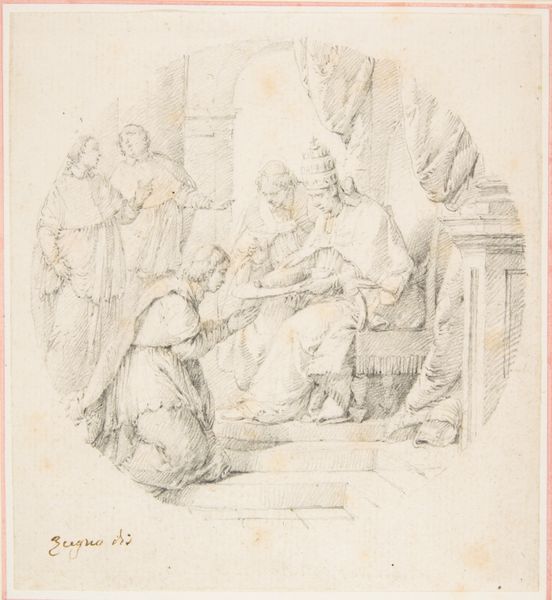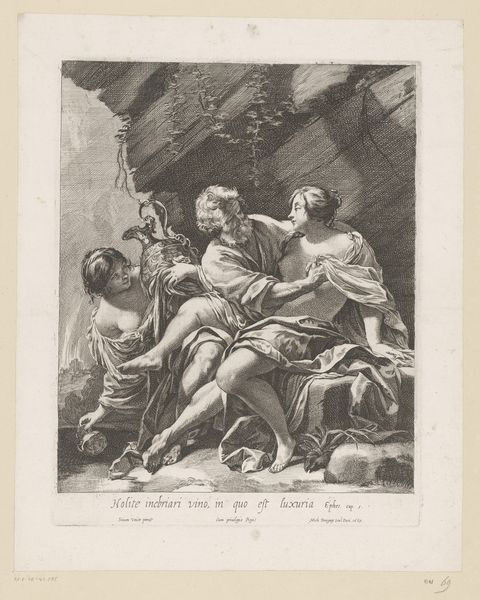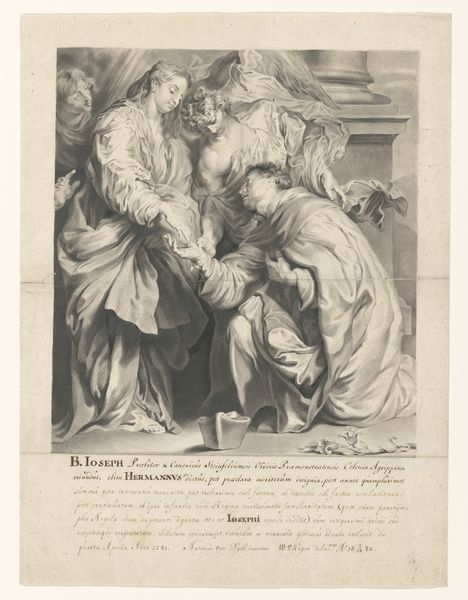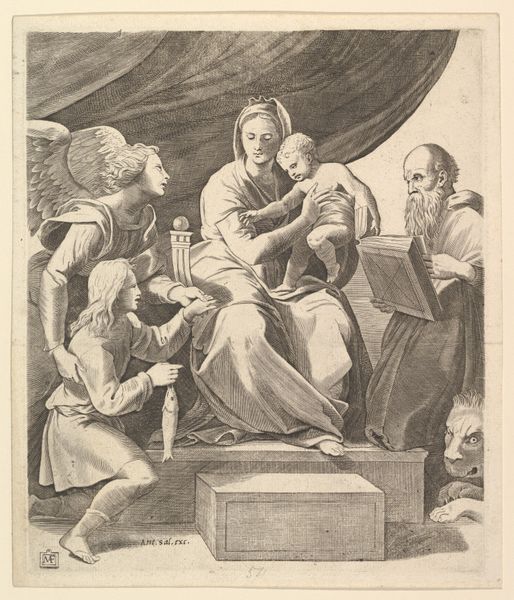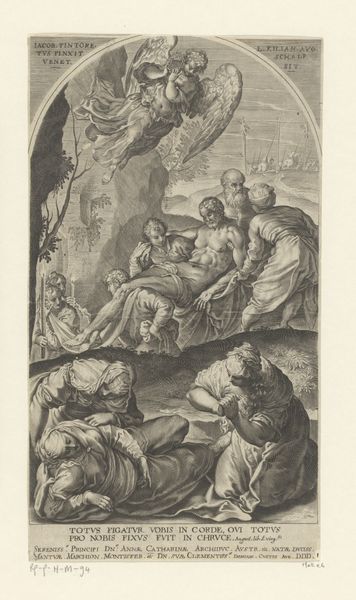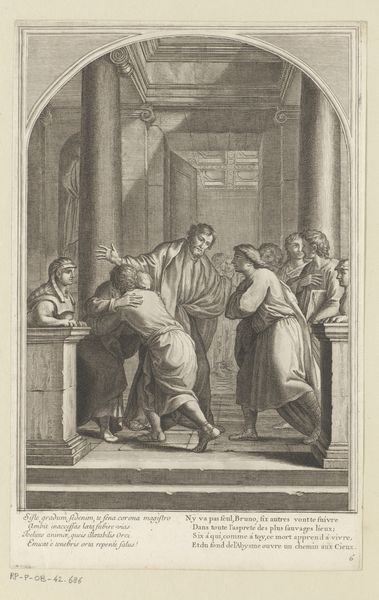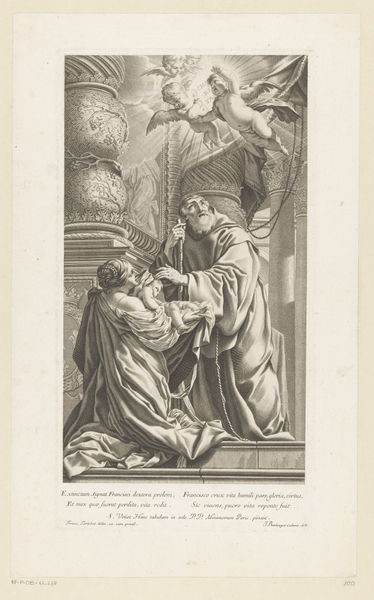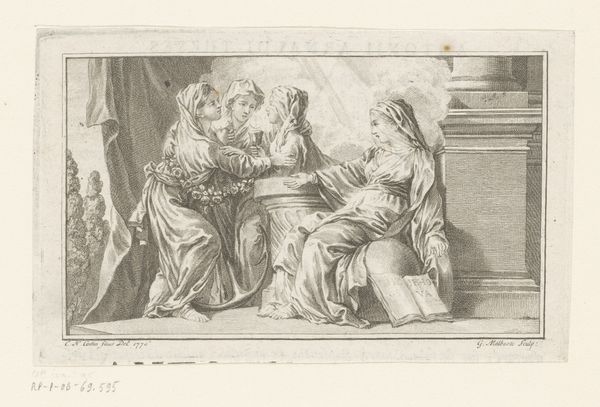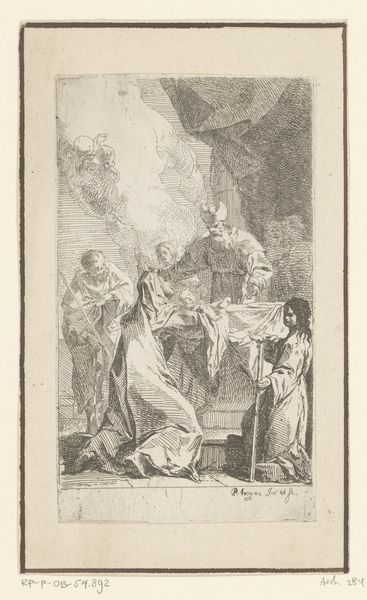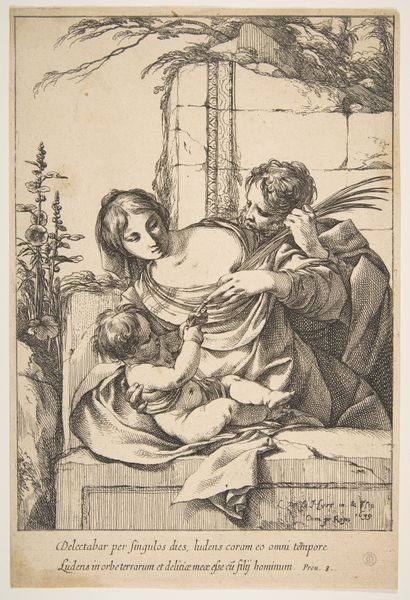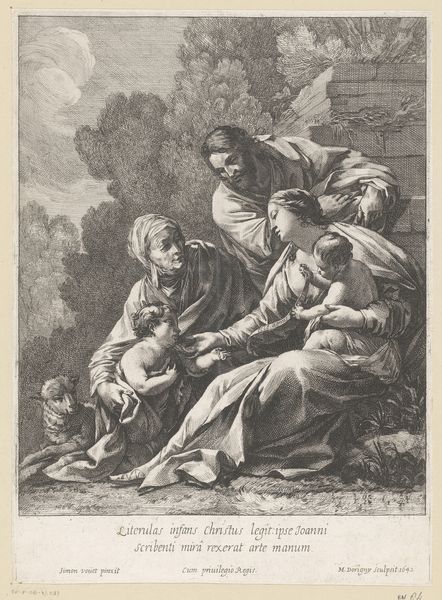
The Adoration of the Magi (copy in reverse) 1625 - 1713
0:00
0:00
drawing, print, engraving
#
portrait
#
drawing
#
baroque
# print
#
figuration
#
line
#
history-painting
#
engraving
Dimensions: sheet: 9 1/8 x 6 3/4 in. (23.2 x 17.2 cm) plate: 8 1/4 x 5 7/16 in. (21 x 13.8 cm)
Copyright: Public Domain
Editor: Here we have "The Adoration of the Magi (copy in reverse)," an engraving after Carlo Maratti, created sometime between 1625 and 1713. It feels like a very traditional composition, but I'm struck by how the artist's hand is so evident in every etched line. What do you see in this piece? Curator: What interests me most about engravings like this is how they democratized art. This image would have been produced using an etching or engraving process, likely involving acid and metal plates. This is important: such prints allowed for the wider dissemination of iconic images, extending artistic and religious ideas beyond the elite. Think about it— how would an artisan in a provincial workshop access visual culture otherwise? Editor: So, it's less about the original artistic intention and more about the reproductive labor involved? Curator: Exactly! Consider the paper itself—its sourcing, production, and distribution. Was it locally made, or imported from elsewhere? The act of replication transforms the meaning and use. It speaks to broader social and economic networks of the time, challenging our conventional ideas about authorship and artistic value. How do we assign artistic value when considering this print? Is it to the etcher, or to the original artist? Editor: That really shifts my perspective. It’s fascinating to consider the engraving as an object embedded in these wider material processes, more than just a representation. Curator: Precisely. The work becomes a document of consumption, labor, and dissemination, opening up valuable discussions about material culture in the Baroque period. Editor: I hadn’t thought about it that way before. Thanks for highlighting all the processes involved. It gives the image a whole new context. Curator: My pleasure. Considering art through a materialist lens provides a rich understanding.
Comments
No comments
Be the first to comment and join the conversation on the ultimate creative platform.
